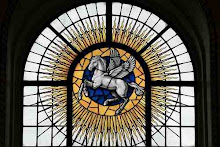 "These things have I spoken unto you, that ye should not be offended. They shall put you out of the synagogues: yea, the time cometh, that whomsoever killeth you will think that he doeth God service. And these things will they do unto you, because they have not known the Father, nor me." - Gospel of John
"These things have I spoken unto you, that ye should not be offended. They shall put you out of the synagogues: yea, the time cometh, that whomsoever killeth you will think that he doeth God service. And these things will they do unto you, because they have not known the Father, nor me." - Gospel of JohnIt took four decades of bloody fighting before the Cathars were finally destroyed as a major presence in the Languedoc. The brutality of the conflict was unsurpassed, even by Medieval standards, with whole towns and communities put to the sword by the marauding Crusaders. Most notorious was the sack of Beziers where 20000 citizens were slaughtered when they refused to hand over 2000 Cathars in their midst. The story has it that when the gates of Beziers fell and the Crusaders poured in to kill the Cathars, they asked their leaders how they would be able to tell the difference between heretics and fellow Catholics. The answer came: 'Kill them all. God will know his own'. Records show that no-one survived the bloodbath. Beziers was razed to the ground.
All this time the Cathar Parfaits continued to operate, resorting to more and more subterfuges to slip the net of the marauding Crusaders. As a means to root out the heresy, the Pope ordered the formation of the Inquisition by the Dominicans. The reign of terror this august organisation began spread all across Western Europe with whole communities informing upon each other to escape investigation. Friends and neighbours were denounced as Cathars, 'proof' was negligible and one by one the heretics were hunted down. Refusal to recant meant death at the stake. Even if someone was dead and condemned posthumously, their body would be exhumed and burnt as an example. In some instances terminally ill Cathars were carried to the stake in their beds and put to death. And yet recantations were almost nil. Most Cathars chose to go to their deaths rather than surrender their faith. Records show that onlookers and soldiers who lit the fires were astonished at the calm with which they faced their end. It would seem their unwavering belief in their impending release from Satan's world meant they feared nothing.

The final showdown took place at the now legendary citadel Montsegur (literally 'Mount Secure'), an extraordinarily remote fortress built on top of an almost insurmountable Pog in the Languedoc hills near Foix. The final onslaught had been triggered by the assassination by a group of Cathar sympathisers of a troop of Dominican Inquisitors. Unable to tolerate this final act of violence, the Church launched one last, decisive campaign. The remaining Cathar leadership holed themselves up in Montsegur, protected by mercenaries and sympathetic Knights and prepared to fight on. The held out for almost a year, hoping for relief from Raymond of Toulouse or the Comtes de Foix. But this time it did not come. Eventually the outer defences were breached and the outlook became hopeless. The Cathars and the Crusaders made a truce. Sick of the fighting, the Crusaders' terms were surprisingly fair. The Cathars would have a few weeks of calm before they had to hand themselves over and any who agreed to recant would be allowed to go free unharmed. On the final night before the truce expired, the Cathar leaders gave the offer to their followers and soldiers who had defended them to undergo the Consolamentum and become Parfaits should they wish to. Twenty four Croyants came forward to receive the Holy Spirit.
But that was in the 17th Century. By the 14th Century the Cathars were finished. Other heresies would spring up over the next few centuries but the Pure Ones would rise no more.


No comments:
Post a Comment